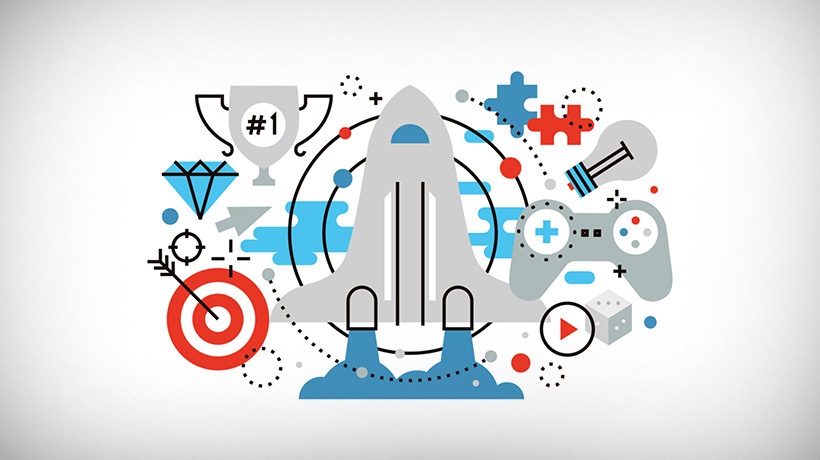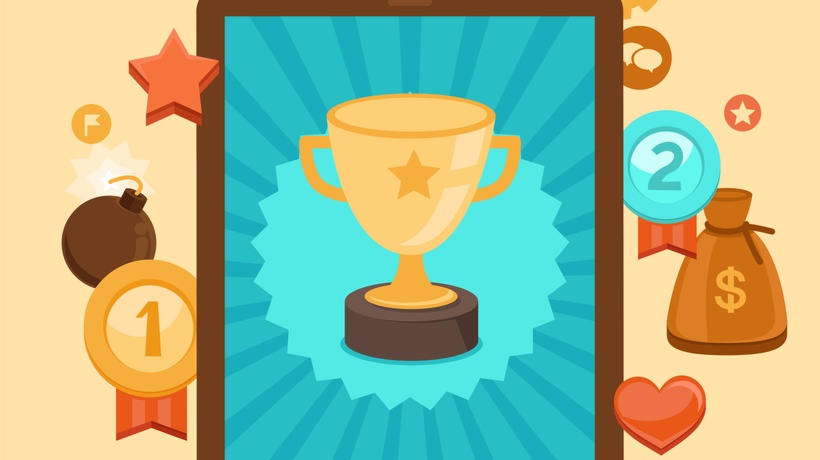Engage Your Employees By Making Work Fun
The Gamification Global Market Report 2023 found that gamification grew to $18.63 billion compared to $14.87 billion the year before. Experts predict it will reach $30.7 billion by 2025. The fact that numerous companies use gamification for employee engagement is a good indication that it works. But how does gamification boost employee engagement? In this article, I will share several reasons why gamification boosts employee engagement and improves productivity.
6 Ways Gamification Boosts Employee Engagement
1. Gamification Drives Employees Towards Important Company Goals
You can strategically set up gamification to drive your employees toward the most important company goals. This is as simple as setting up the "game," so more rewards are earned as employees get closer to the goal in question.
For example, assume that your goal is to gather more leads. Most of your gamification ideas for employee engagement will focus on generating more leads. You can make a leaderboard that lists the employee with the most leads. Perhaps employees will earn points in the game or even in-game badges for reaching a certain number of leads.
2. Gamification Helps Build A Sense Of Community
Gamification for employee engagement also does wonders for building a sense of community. Everyone who is working toward a common goal feels a sense of community. Additionally, employees can compare themselves to each other and even engage in friendly competition. Some types of gamification can boost the feeling of communication in other ways. For example, consider gamification apps for employee engagement that divide employees into teams and create team goals. The nature of gamification will likely encourage members of each team to feel like a community.
Employees in companies with gamification tend to be happier and more satisfied with their jobs. This reduces employee turnover and improves employee productivity.
3. Gamification Is A Low-Cost, Easily Implemented Solution
Conveniently, gamification for employee engagement isn’t just effective; it is also easy and affordable. All you have to do is choose gamification software for employee engagement. There are numerous affordable options, from mobile apps to desktop programs. Most are very cost-effective, and many are also somewhat customizable.
Best of all, most gamification software and apps are designed to be user-friendly. This makes it easy to set up the "game" for your employee or business goals. It also means that your employees should understand the game mechanics within a matter of minutes.
Some companies mistakenly think that gamification for employee engagement only works for businesses with a younger workforce. While it’s true that it tends to appeal more to a younger workforce, the ease of use means that any member of your team can benefit from it. It can even revive interest from employees who have started to get bored with the daily routine after decades on the job.
4. Gamification Creates Clear And Consistent Lines Of Communication
While you may not immediately think about it, gamification creates clear and consistent lines of communication. This ties back into the way that gamification drives your employees toward their goals. That push toward goals is consistent and clear, reducing the need to clarify it with employees.
Everyone is always on the same page. Your employees know what actions you want them to take and how you prefer them to complete those processes. You can make communications more concise and transparent by referencing achievements in the game, as those already have clearly defined goals.
5. Gamification Aids In The Onboarding Process
One great way to use digital gamification for employee engagement is to create an eLearning program with features such as quizzes, leaderboards, badges, and rewards. This not only helps automate onboarding and training processes but helps create a culture of Learning and Development which helps enhance employee engagement and improves tenure with the company.
Using gamification during onboarding will increase your employee’s ability to retain their new knowledge. That, in turn, will lead to an increase in productivity and efficiency. Employees won’t have to pause to refresh their memory on processes, standard operating procedures, or guidelines. They can access relevant eLearning modules when needed.
6. Gamification Motivates Employees To Be More Active And Engaged
When it comes down to it, gamification motivates your employees to be more active and engaged. The interactive elements and strong visuals encourage employees to interact directly with their training. With gamification, your employees are more willing to study and learn, as it is more interesting and engaging than just reading a document or watching a video.
Of course, you can also use best practices to make your training videos or documents more engaging, but you’ll get even better results if you combine those with gamification. For example, let employees earn points for watching the videos and answering questions about them. For many employees, the element of competition in programs with leaderboards serves as further encouragement to be active. Many other employees just enjoy competing against themselves to see how far they can get and feel a sense of achievement.
Takeaway: The Best Way To Increase Employee Engagement Is To Add Some Games!
When it comes down to it, gamification is an excellent way to improve your employees’ engagement. They will be motivated to participate in the training and games, and you will build a sense of community in the process. Even better, they’ll retain what they learn better. Now, all that’s left to do is adjust the gamification examples for employee engagement to fit your company’s goals.
Editor's Note:
Having been involved in the employee onboarding and training sector for quite some time, we've had the opportunity to witness the evolution of employee engagement needs over the years. While a significant number of companies still use traditional means to boost employee engagement, the successful ones have shifted their efforts to innovative strategies like gamification. In our experience, gamification has immense potential for boosting employee engagement and improving productivity. Contrary to popular belief, gamification of operations can be cost-effective and easily implemented with the help of gamification solutions providers.
Gaming elements (leaderboards, points tables, badges, etc.) can make routine tasks more fun and enjoyable for employees. With the right strategies, organizations can even promote a sense of community and teamwork by dividing employees into teams and setting team goals. Having clear and consistent aims also improves coordination and communication among team members. The benefits of gamification can also be extended to the onboarding process, ensuring that new employees have a memorable experience. Some may think that gamification only addresses the engagement needs of younger employees. However, it also has the potential to transform engagement levels in employees with decades of workplace experience.









